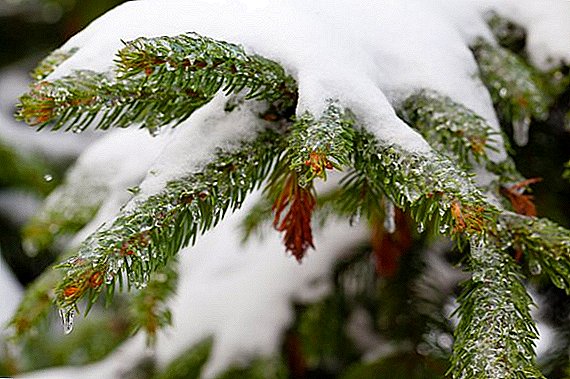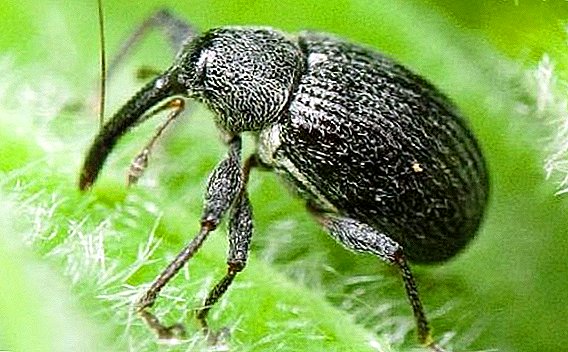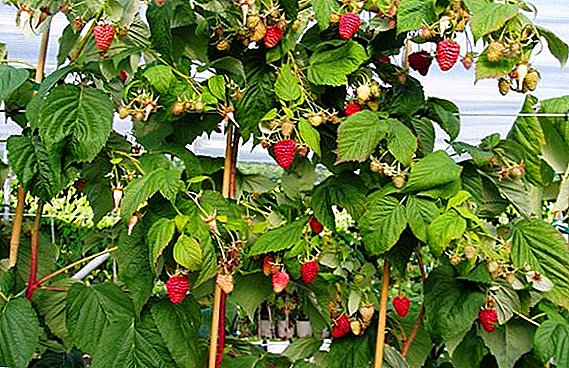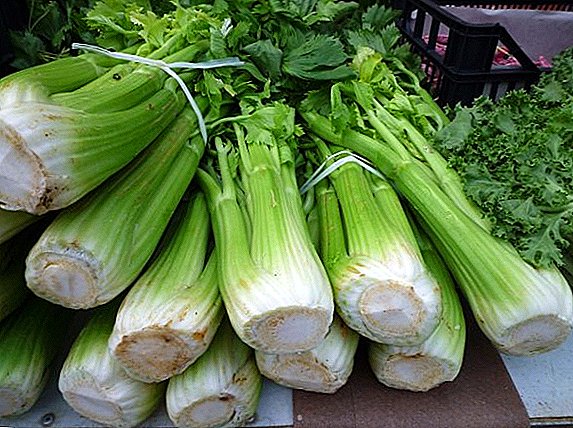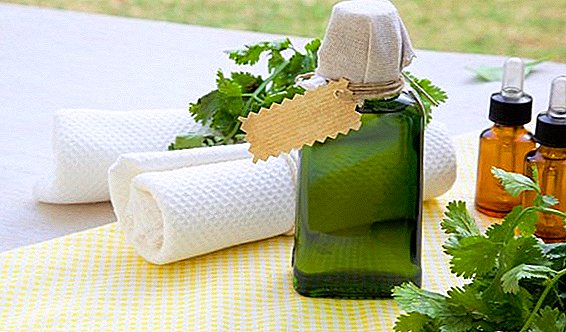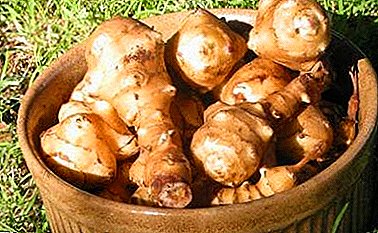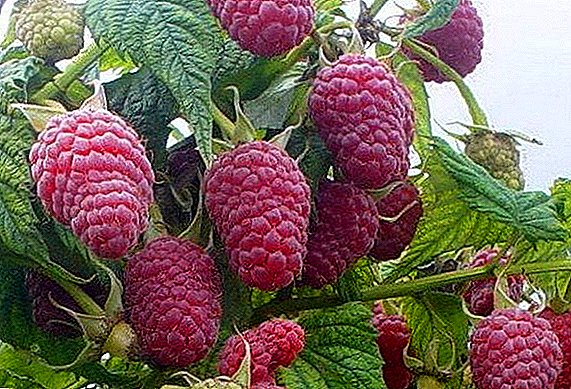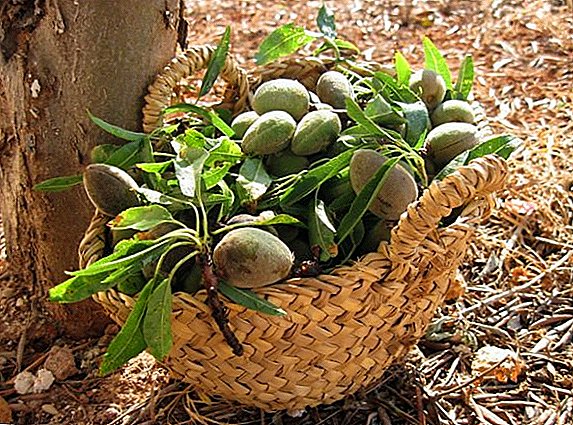 Almond - southern handsome with magnificent gentle blossoming and the most valuable fruits. The almond plant is presented both in the form of tall shrubs and trees. Almond trees since ancient times were grown by people, and the first mention of almonds was found in the texts of the ancient Assyrians and the Bible.
Almond - southern handsome with magnificent gentle blossoming and the most valuable fruits. The almond plant is presented both in the form of tall shrubs and trees. Almond trees since ancient times were grown by people, and the first mention of almonds was found in the texts of the ancient Assyrians and the Bible.
 However, the food is not used the fruits of almonds themselves, but only the bones of them. They have a delicious core and are called "almond nut", which is not entirely correct.
However, the food is not used the fruits of almonds themselves, but only the bones of them. They have a delicious core and are called "almond nut", which is not entirely correct.
The nutritional and taste properties of almonds are highly valued in cooking. In cosmetology use almond milk, which has softening and regenerating properties.
In the wild, almonds grow only in the southern climate, although skilled and diligent gardeners manage to grow the plant in the cold northern regions. With proper care, shelter for the winter and protection from diseases and harmful insects, almonds will decorate your garden with flowering and a good harvest of almond fruits every year.
Important! Almond cleans the blood and lowers the sugar content in the body.
Diseases of almonds and how to deal with them
Diseases of almonds appear on the plant, if the gardener neglects timely preventive treatments, and also violates the agrotechnology of cultivation and care. Almonds are prone to fungal diseases, often caused by scab, cricosporosis, rust, moniliasis, gray rot and nodules.
Cercosporosis
 The disease of fungal nature, which manifests itself in early summer. The first signs of illness - affected leaves, with round red spots with gray patina on top. When the disease develops, the leaves turn brown, their fabric dries out and they fall off. Growing new leaves slows down the formation and ripening of fruits and impairs their quality.
The disease of fungal nature, which manifests itself in early summer. The first signs of illness - affected leaves, with round red spots with gray patina on top. When the disease develops, the leaves turn brown, their fabric dries out and they fall off. Growing new leaves slows down the formation and ripening of fruits and impairs their quality.
Therefore, when the first symptoms of the disease are detected, spraying almond fungicides. Quite good results have been shown by the treatment with the Topsin-M fungicide.
Scab
 When the trees are infected with scab, the fruits become unsuitable for consumption, and the development of young shoots slows down. Peddlers of the disease - spores that overwinter in plant debris.
When the trees are infected with scab, the fruits become unsuitable for consumption, and the development of young shoots slows down. Peddlers of the disease - spores that overwinter in plant debris.
To effectively fight With this disease, you need to choose varieties of almonds with high resistance to scab. Mandatory processing garden Bordeaux liquid. Almonds are processed in late autumn and spring, after flowering.
Also, careful cleaning of the garden from the crook, cropping of diseased branches on the plant, and the burning of infected parts and fruits. All this will undoubtedly help in the treatment of the disease.
Rust
 The first sign of the disease are small brown specks on the leaves. After a while they increase in diameter and merge with each other. Bottom on the leaves are formed brown pads, after which they fall. They must be removed from the garden and burned.
The first sign of the disease are small brown specks on the leaves. After a while they increase in diameter and merge with each other. Bottom on the leaves are formed brown pads, after which they fall. They must be removed from the garden and burned.
If this is not done, the pathogens of the disease will remain in the soil and the plant will fall ill again next season. In late autumn, the soil under the almond trees must be dug up, and the plants themselves should be treated with an aqueous colloidal sulfur suspension.
Monilioz
 Moniliasis is a fungal disease often found on almonds. It can be prevented by prophylactic autumn spraying with Bordeaux mixture. Monilias overwinter in dried, shriveled fruits and on diseased branches.
Moniliasis is a fungal disease often found on almonds. It can be prevented by prophylactic autumn spraying with Bordeaux mixture. Monilias overwinter in dried, shriveled fruits and on diseased branches.
Spores of the fungus spread in the spring, gradually infecting the entire garden (they are carried by insects and the wind). In rainy summer, the spread of the disease is more rapid and can ruin the entire crop. A dark spot appears on an already ripening almond, which gradually spreads all over the fruit and the almond begins to rot right on the branch.
Klesterosporiosis
 The second name for this disease is "perforated spotting." It is characteristic of stone trees and shrubs, and the signs of disease of almond nodules are purple, red-brown and brown spots on the leaves of the plant.
The second name for this disease is "perforated spotting." It is characteristic of stone trees and shrubs, and the signs of disease of almond nodules are purple, red-brown and brown spots on the leaves of the plant.
Sometimes they appear on the fruit, gradually becoming larger (a dark brown rim appears at the edges, and the middle of the spot brightens and dries out). Soon, gum begins to appear from the bark of the plant affected by the cholesteroplasty.
Rainy warm summer favors the development of the disease. To list preventive measures The spring processing of almonds by fungicides "Chorus", "Skor" or "Vectra" is included against klyasterosporioz. The first spraying is carried out before the flowering of almonds, the second - immediately after it. And the third treatment is carried out 14 days after the second.
Gray rot
 Botrytis or gray rot appears on the almond dark spots located on the branches and leaves of the plant. In wet weather fluffy gray islands are formed on these parts - fungus spores that are spread by the wind.
Botrytis or gray rot appears on the almond dark spots located on the branches and leaves of the plant. In wet weather fluffy gray islands are formed on these parts - fungus spores that are spread by the wind.
A suitable environment for the disease is created by thickened trees, untimely pruning and excessively high doses of nitrogen fertilizers. In the fight against gray mold in the first place is winter and spring pruning of trees.
Spring pruning of frozen branches is carried out immediately, after the fall of color from the plants, but before the formation of pads with spores of gray rot on the branches. The garden is sprayed with fungicides. The following drugs are suitable for the treatment of the disease: "Topaz", "Kuprosat", "Oxyh".
At the first signs of the disease, the branches infected with fungus are cut out and the garden is treated with one of the above listed preparations. Additionally, whitewashing (plastering) of the stem and branches of the diseased plant can be carried out with this solution: 50 g of any fungicide and a pack of wallpaper glue CMC are added to 10 liters of water.
Almond pests and how to control them
Almond Seed Eater
 These almond pests have adapted to wintering on fruits that did not fall off the tree in the fall. Typically, these fruits are damaged, which means it is better to shake off or knock the nuts off the branches and burn them. In mid-October, almond trees are sprayed with special products.
These almond pests have adapted to wintering on fruits that did not fall off the tree in the fall. Typically, these fruits are damaged, which means it is better to shake off or knock the nuts off the branches and burn them. In mid-October, almond trees are sprayed with special products.
Digging of the soil near the trunk under the winter and the burning of fallen leaves and carrion, contributes to the destruction of hibernating insects. In the spring, immediately after the shedding of color, the branches are processed by the Bordeaux mixture (a 1% solution is taken).
Important! Favorite wintering place for almond semenaidae is the stalk circles of almond trees.
Sheet wrench
 The moth caterpillar gnaws the leaves, further turning them into tubes and laying eggs in them. When such leaf cocoons are visually detected, they must be plucked and burned, thereby destroying the clutch.
The moth caterpillar gnaws the leaves, further turning them into tubes and laying eggs in them. When such leaf cocoons are visually detected, they must be plucked and burned, thereby destroying the clutch.
To effectively fight with the leafwrap, you have to wait until the caterpillars start to appear en masse from the cocoons and can be sprayed with the appropriate insecticide Actellic or Calypso, or they can be treated with similar preparations. Caterpillars are also destructive for treating with 0.3% chlorophos.
In spring, when the air temperature is above +5 ºC, obligatory preventive treatment of trees with Bordeaux mixture is carried out.
Aphid
Many gardeners in the fight against pests almonds try to do not by chemical means. The nut harvest should not contain residual traces of chemical treatments, therefore, the main ways of combating biologically pure:

- Pepper tincture: 20 pieces of dry hot pepper, pour a liter of water and boil on a small fire for about an hour. This broth is poured into 10 liters of water, stirred and 300 g of gray laundry soap are added. This remedy is infused for a day, until complete swelling and dissolution of soap in water. Plants are sprayed in the morning, after complete drying on the almond leaves of the morning dew.
- Tobacco infusion: a glass of pounded tobacco leaves is added to a bucket of water, after which they are mixed and brought to a boil (boil for 15-20 minutes). Insist the decoction for 24 hours. After that, add 50 g of soap to it (for better adhesion), which must be well dissolved and add two more buckets of water to the infusion. After thorough mixing, it will be ready to be sprayed from pests.
- Onion extract: 0.5 kg of onion is taken and minced together with the husk. Then, it is poured with a bucket of water and insist throughout the day. Strain the finished infusion through gauze or strainer - the infusion is ready.
Did you know? There are many popular recipes for the destruction or deterrence of pests from the garden. But the main thing is not to harm too aggressive means: do not burn tender foliage and do not destroy the most useful garden workers along with the pests.
Spider mite
 In the dry summer almonds are affected by spider mites. This pest is characterized by rapid reproduction. A colony of spider mites lives on plants in a thin, weightless cobweb and sucks the juice from young leaves and shoots.
In the dry summer almonds are affected by spider mites. This pest is characterized by rapid reproduction. A colony of spider mites lives on plants in a thin, weightless cobweb and sucks the juice from young leaves and shoots.
The plant weakened by a spider mite easily gets sick, besides the tick itself is a peddler of the disease. Spider mites are destroyed with the help of acaricides, such as Kleschevit, Fitoverm, and others.
Did you know? You can carry out the processing of plants from spider mites with folk remedies: for example, half a bucket of onion peel is poured to the edge of the bucket with hot water (not above +65 ° C), and allowed to infuse for 12 hours. Then, brew the infusion with another bucket of water and filter through gauze. After this, the infusion is ready, but it must be used within the next day.
General tips for pest and disease prevention
- To be always up to date with the latest methods of pest control, read specialized publications, register on the gardeners' forums, share experiences with colleagues.
- To effectively protect the garden, use only the most new and modern preparations. However, it is impossible not to take into account the fact that over time, plants get used to frequently used drugs, the diseases themselves mutate and the treatment with such drugs becomes ineffective. That is why you should choose only the most modern tools manufacturers which take into account all these nuances.
- Mandatory autumn garden cleaning from the windfall, leaves and branches. Do not leave a fallen leaf to hibernate, as it may overwinter many harmful insects. All plant residues need to be taken out of the garden.
- Loosen the soil under the trees more often, which will facilitate the access of oxygen and moisture to the roots of the plant.
- Set in the garden feeders and birdhouses, feed the birds in winter. They will help you in the warmer months in the fight for the purity of the garden from insect pests.
 The fruits of almond are very useful, besides possess unsurpassed taste. So why not grow such a useful plant in your garden? We hope that this article will help you protect the almond trees from diseases and pests. Abundant yields to you!
The fruits of almond are very useful, besides possess unsurpassed taste. So why not grow such a useful plant in your garden? We hope that this article will help you protect the almond trees from diseases and pests. Abundant yields to you!


